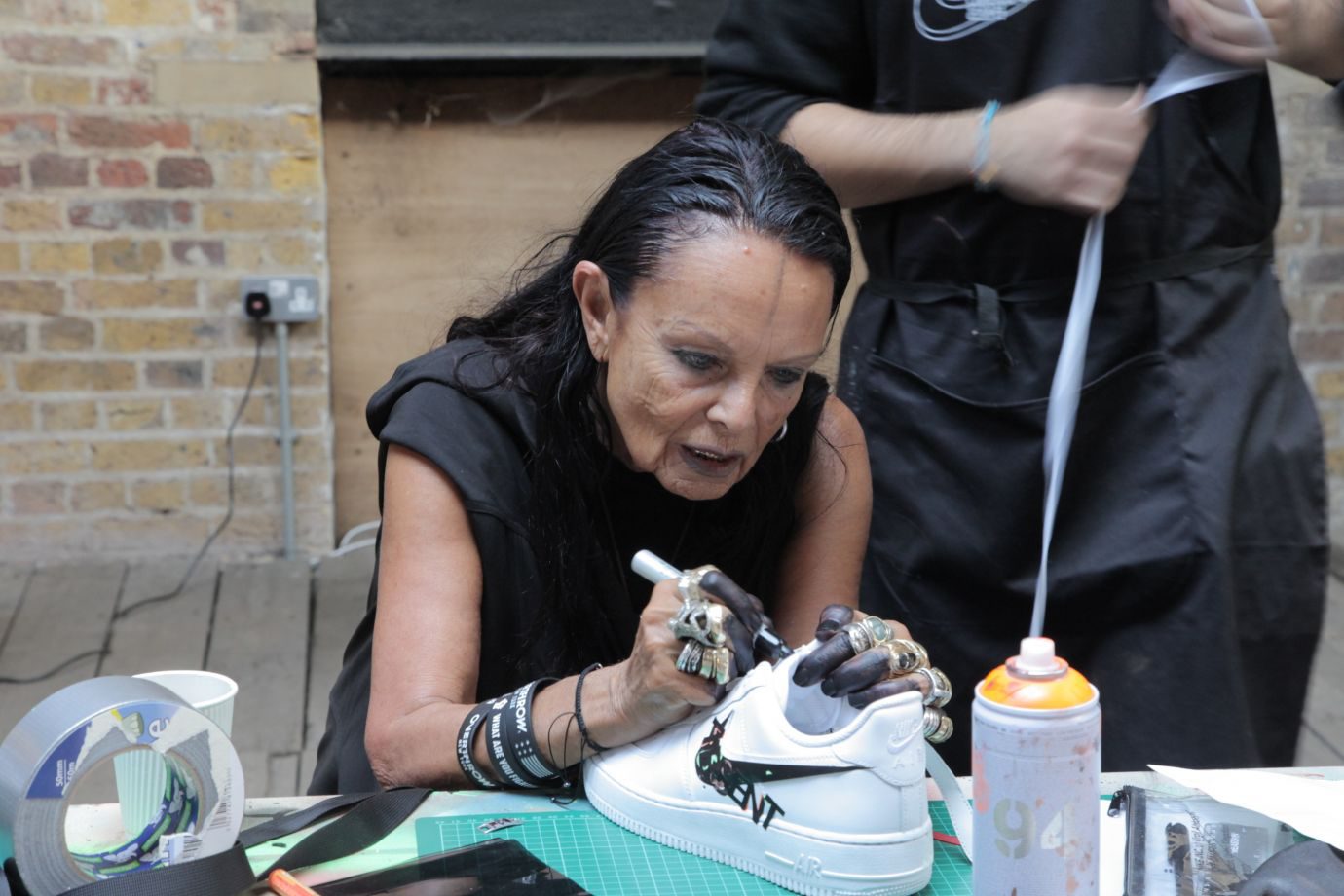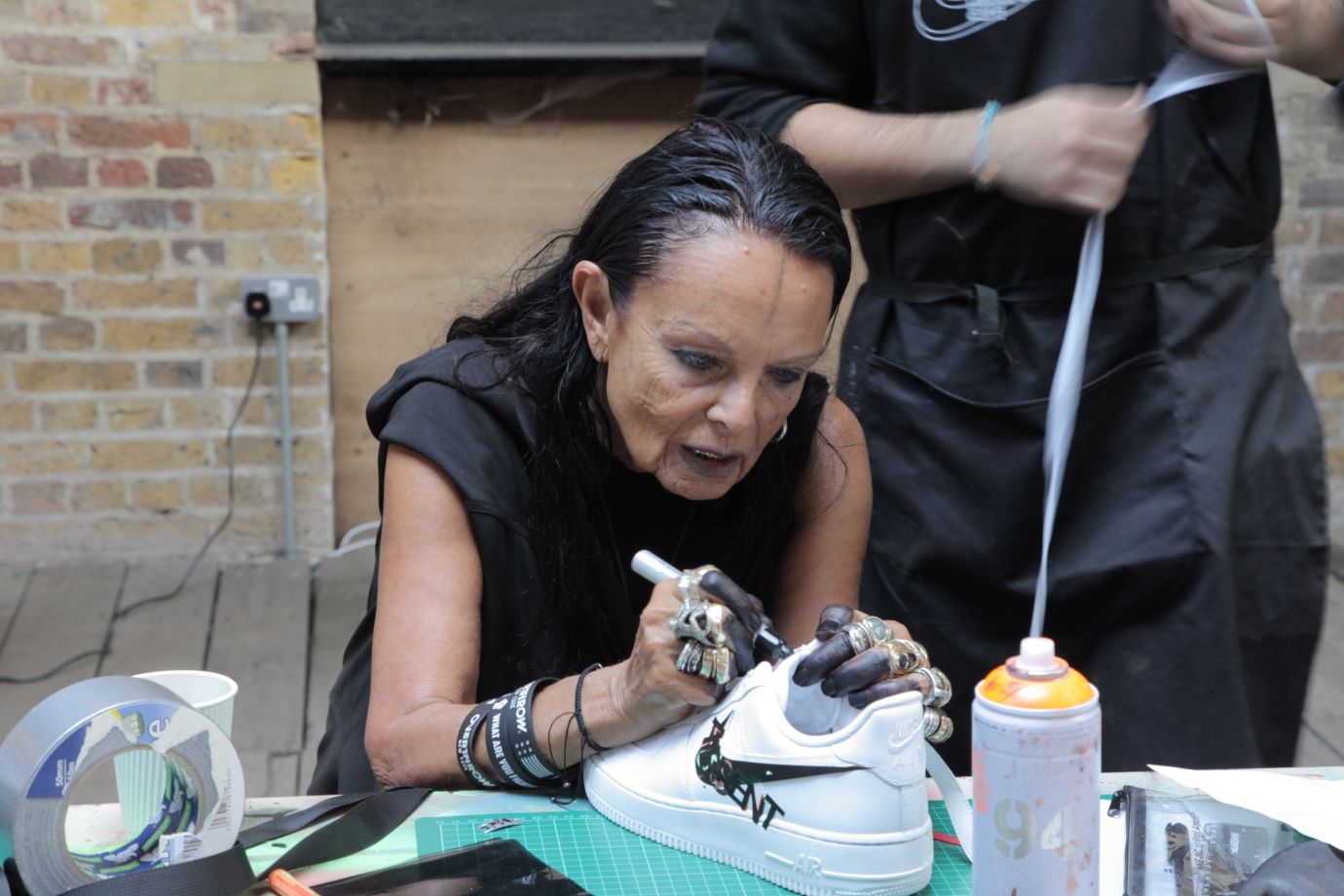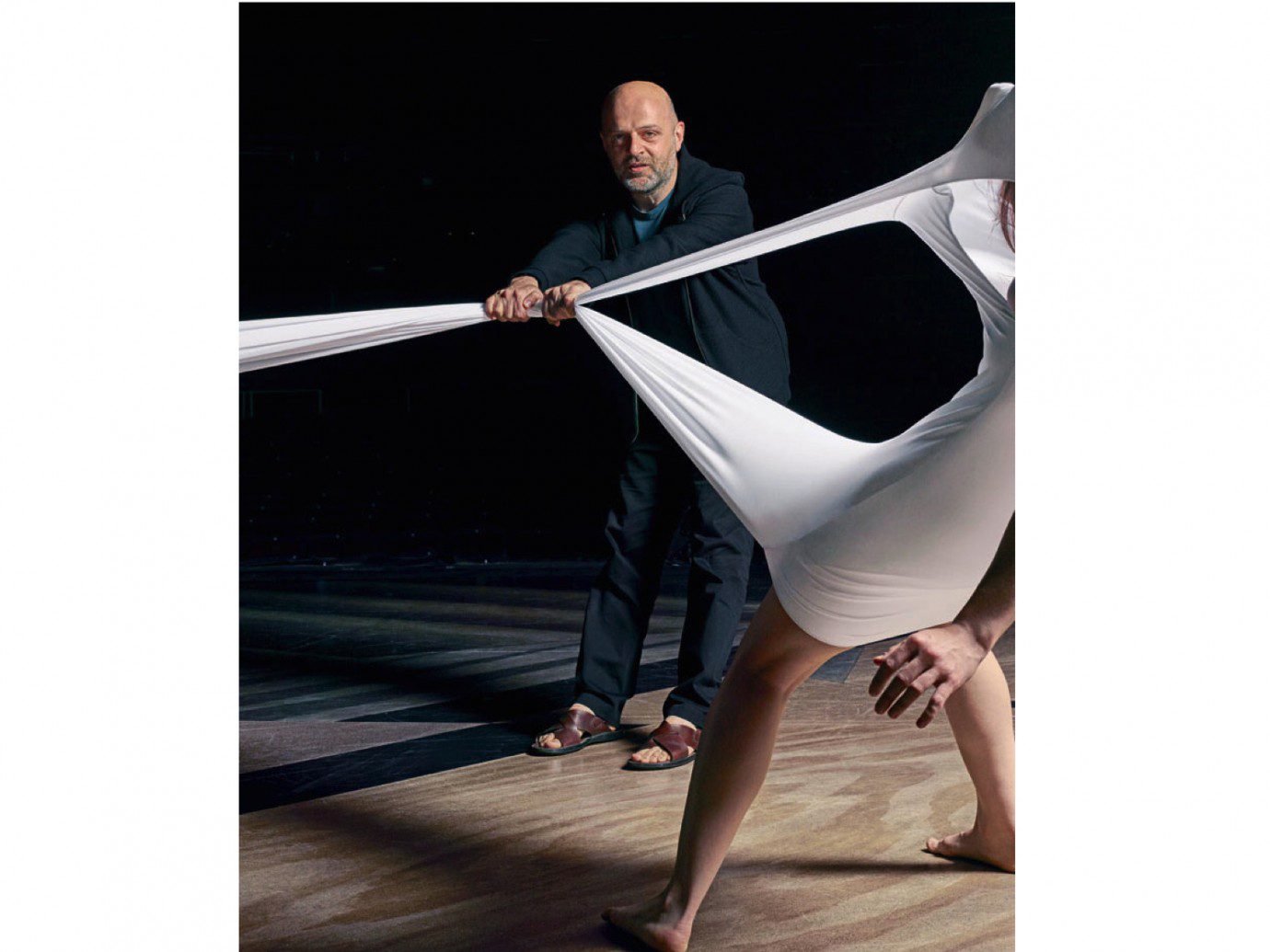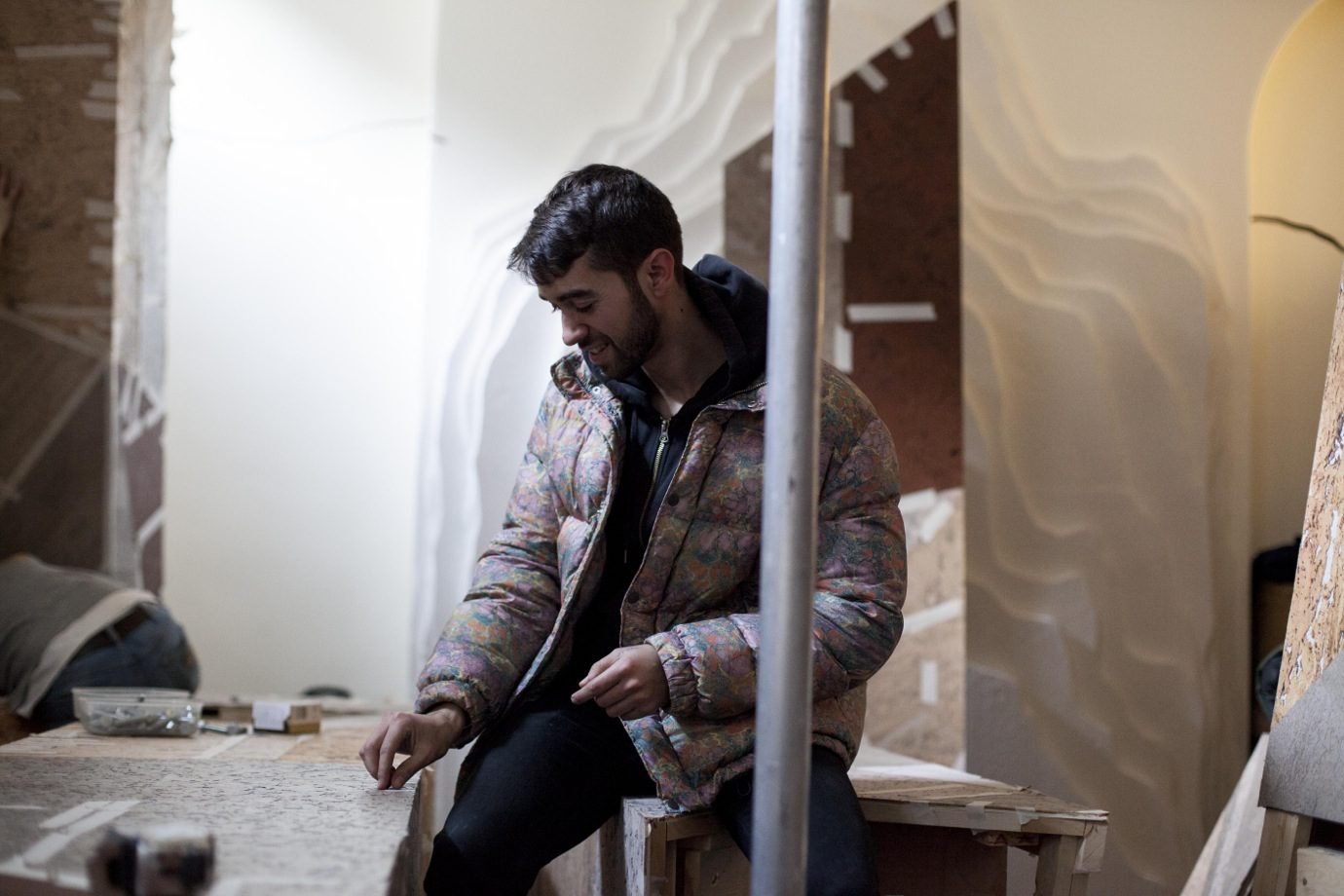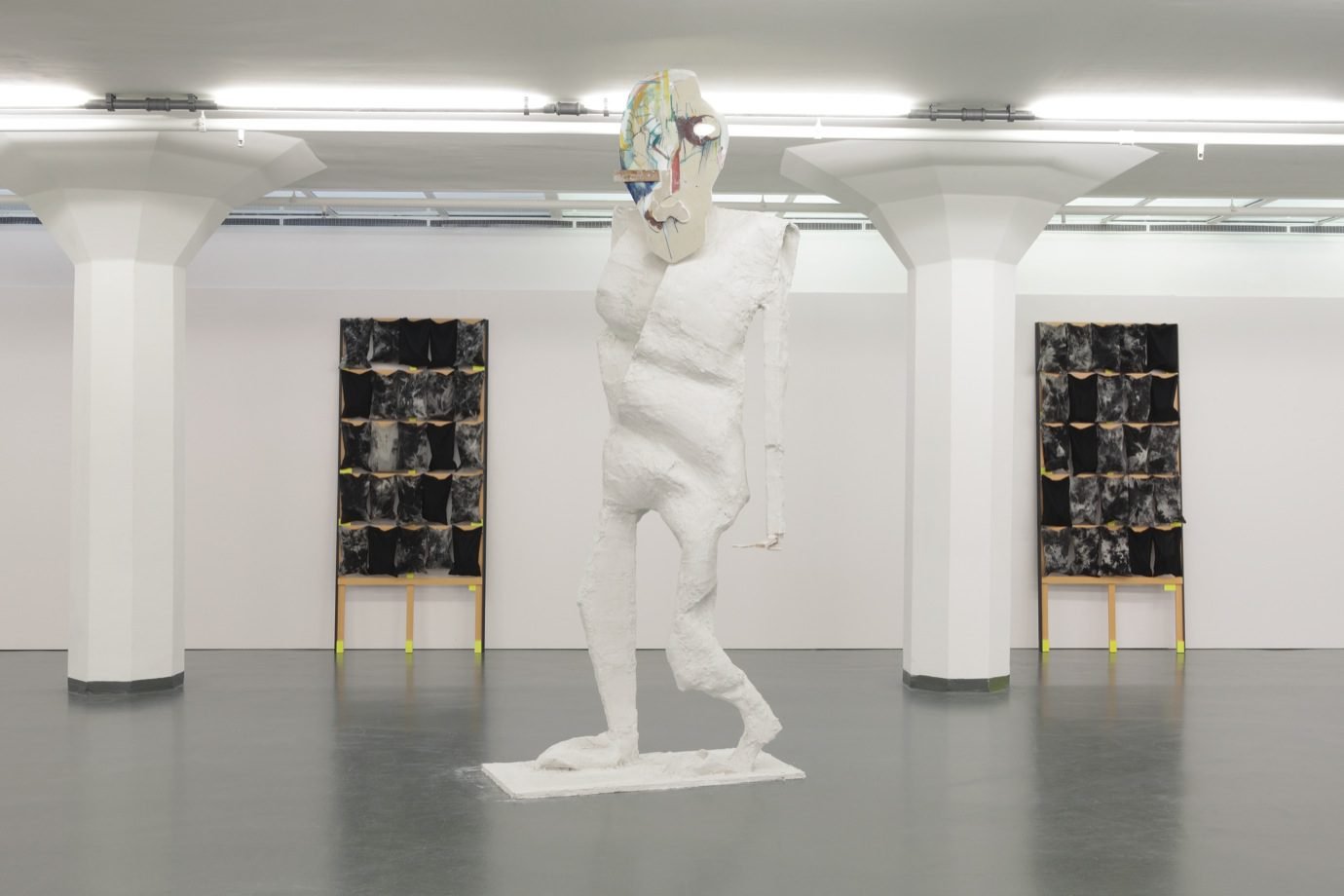How did the workshop go this morning ? Were there any surprises?
I was a little surprised, because when we decided on the project, I thought we would be cutting tires and build a shoe from scratch. But that wasn’t possible in two hours, of course. But when I started explaining my ideas, and walking around with those Maasaï shoes, people got really in the mood. It was very difficult, because when you get that nice, clean, white shoe, and somebody is telling you to trash it, that isn’t easy. But then a few got really into it!
I’m not really a sneaker person, I only wear them when I’m boxing. I was very excited to explore all the techniques Nike has, but I wanted to add a practical element. I researched the Maasai, and they have these specific shoes to walk on sand. I wanted to pull the Nike sneaker away from the track, away from its regular environment, and design a shoe for heavy sand. There was no decoration to it, the shoe is so perfect, with a specific purpose, so I wanted to twist that.
There’s a huge trend for collaborations in fashion at the moment, why do you think brands are so attracted to them?
Everything is about collaboration today, don’t you think?
I feel like brand collaborations can go two ways, either they are incredibly successful, or they’re a complete flop. When two creative people work together in that way, what defines whether it’ll go well or not?
That’s true for everything in life! Some collaborations work very well because they come from true teamwork, and both parties want to work together. Like Rei Kawakubo, she always collaborated in a way that was surprising, but where neither party ever took over – the collaboration was equal. Usually, if the collaboration is pushing the other one in the right direction, it’s fantastic.
Thinking of younger designers who are just starting their label, do you think that collaboration is always a good thing, or are there situations to avoid?
You know when you start as a business, it’s always very hard. So a collaboration is usually an advantage, even if it’s just for the financial support. The one asking for the collaboration should always have a realistic view of what they can do. It could be quite damaging for a young designer to have a failed collaboration and get dropped. But then again, it’s always nice to have the experience of a different creative team and meet new people. If you already have your own voice, and it’s a situation where you can stay true to yourself, go for it!
“IN LONDON, DESIGNERS DON’T RECEIVE TIME TO GROW.”
You mentioned how hard it is for a young designer to set up their own label. Paris has done a great job in recent years to create more space for younger talent. Do you recognise that as well?
With the Japanese, Paris became the stage for interesting shows, so everybody wants to show there, because there’s more opportunity. In London, you might find crazier designs, but sometimes I feel like they don’t receive enough support to sustain their label. The designers don’t receive the time to grow. In Paris, designers flourish because the stage is already there. I say Paris, but most designers are from somewhere else, of course. So I don’t think French designers are inherently more talented. If you want to sell, you have to go to the market place. Do you think London isn’t niche anymore?
I think it is! But I feel like the dichotomy between young London and established Paris has shifted. But that might be a naïve interpretation from a young writer.
No, I don’t think it is. But, we’re talking about showing, we’re not talking about creating. If it’s only about creation, I think London might be just as strong as anywhere, but the scene is in Paris. I don’t know enough about it to really criticize, but I feel like London had so many talents who never make it past the beginning stage. We have the Fédération de la Haute Couture et de la Mode, and the Andam Award that exist only in Paris. I didn’t see that many young names in London on the schedule this season, what do you think?
In London we do have a few interesting organisations like Fashion East or NewGen, that sponsor young talent, but they might be too focussed on the shows.
Yes, you need support beyond that. If you have a place to show, but are left helpless after that, it doesn’t really help. Brands come up in London, but they quickly move to Paris.
“YOUNG DESIGNERS NEED SUPPORT BEYOND THE SHOW.”
Then how can an industry support young talent and ensure longevity?
Magazines like Dazed are great, but the real issue is production. We have enough media, but in France production has died. There is also that element of being in the right place at the right time. London does have a lot of great places to stage a show, so maybe it takes one leader who’ll put the city on the map.
I’m really intrigued by what you said in the beginning, about boxing. Could you tell me when you started and what it means to you?
Not only do I like boxing, I’m doing an entire project around it in London. For the next few months, my life will be all about boxing. I’ve been boxing for 30 years. It has become trendy recently, because it’s a great way to stay in shape, but to me it’s more about the collaboration. You can never do it alone, you always have that other person looking back at you. It gives you a great perspective on life, because you know you’re going to get hit, and that you’ll have to hit someone else, but you need to keep standing up, that’s the only thing that matters. It’s also very much about looking someone in the face, and feeling powerful. There’s a choreographed movement, almost like a dance, so the human contact is very important: looking the other in the eye and guessing what their next move will be. There is a twisted friendship in boxing. There are a lot of rules, which is why they called it a noble art. It’s all related to life. It started as a way for boys, who were having difficult times, to get out of their environment. Now there’s more women boxing, which is great. It’s very important for women to join. All my girlfriends who joined, love it. There’s a joy I can’t really explain. Boxing is the opposite of yoga, it’s athletic and fast, and you’re entirely dependent on the other. You have those gloves on, so even to take a sip of water, you need someone else. All these elements make you really strong, but really vulnerable at the same time. It’s very human. So that’s why I like boxing. [laughter]

